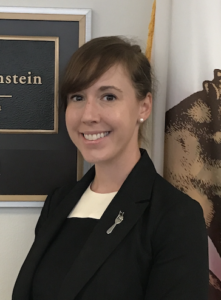Since 2001, when the current system of Medicare payments was initiated, consumer prices on just about everything—cars, homes, gas, airline tickets, clothing and food—have increased by approximately 75%. The cost of medical care has gone up even more, increasing 105% between 2001 and 2024.1 However, Medicare has failed to adjust reimbursement to keep physicians whole, resulting in unsustainable de facto cuts to physician reimbursement nearly every year.
The Medicare conversion factor (CF), one of the multipliers used to determine reimbursement of evaluation and management services relative value units (E/M RVUs), was $38.26 in 2001. If the conversion factor rose with inflation, the CF would be $67.39 in 2024. The actual conversion factor in 2024 is $32.74—even lower than it was in 2001.

Dr. Downey
Physician practices are expected to pay high wages to their support staff to keep pace with inflation, pay for hardware and software, and cover building rent, malpractice insurance, medical equipment, marketing, legal advice and more on five fewer dollars than in 2001, even though those dollars are worth 105% less. It’s no wonder physicians are opting out of owning and operating small businesses in favor of joining larger multi-specialty groups or selling their practices to hospital systems. Others are opting out of the Medicare payment system altogether, only accepting patients with private insurance or those willing and able to pay cash for services. When physicians shutter their practices, a ripple effect is felt throughout the local economy. In the U.S., physicians support the employment of 12.6 million Americans. Other businesses that rely on physician-owned practices get an economic boon, too, on the order of $3.2 million per physician and $2.3 trillion overall.2
Unsustainable Cuts
In addition to dwindling payments, the current Medicare reimbursement system is unstable. Physician business owners are never sure what their reimbursement rate will be from year to year. Physicians are forced to squeeze even more patients into their schedules every day to make up for new cuts, leaving both physicians and patients dissatisfied. Physician burnout is a threat to the sustainability of medical care for all Americans, and failing to be reimbursed for the cost of care is one significant stressor for physicians.3 This leaves groups like the ACR and the American Medical Association (AMA) rushing to plead for members of Congress to eliminate the cuts—or at least reduce them.
In past years, the ACR and the AMA have been successful in advocating for a reversal of the fee cuts, and in 2024, these groups are working diligently to reverse the 3.37% cut that took effect on Jan. 1. A failure to reverse the cuts will further threaten the continued viability of physician practices, with the most vulnerable Americans disproportionately affected: seniors, those with disabilities and those in rural or underserved areas with few options for medical care. Physicians find themselves at a breaking point, facing the third year in a row of Medicare payment cuts. Cuts in the past four years total a nearly 10% payment reduction, despite a Medicare Economic Index (MEI) of 3.8% last year and 4.6% this year, the highest level this century. These cuts have added to the pandemic-driven burnout and exodus from clinical medicine, adding salt to open wounds. Adding further insult to injury, every other sector in the healthcare industry is receiving an increase in Medicare payment this year, at the expense of physician payment.
